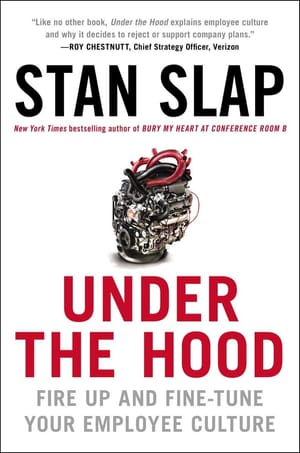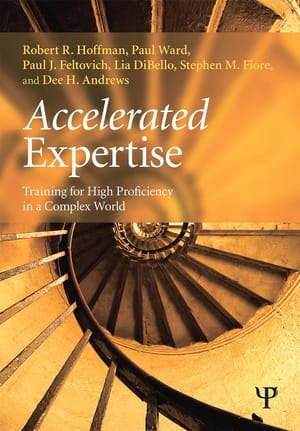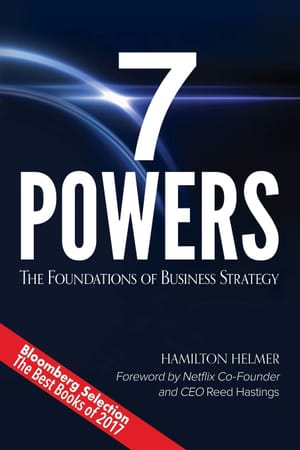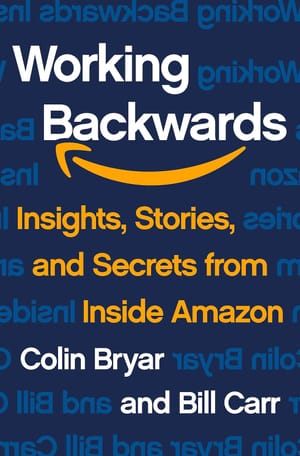
This is a summary of a mediocre 🌿 branch book. I intend this post to be a comprehensive summary, which means you can skip the book and read this instead. Read more about book classifications here.
I first came across the idea that marketing was the ‘career skill of the future’ in economist Tyler Cowen’s Average is Over, a book about the future of jobs in a world of automation. You may find my summary of that book here; in it, I quote Cowen saying:
“I see marketing as the seminal sector for our future economy. (...) The growing importance of marketing integrates two seemingly unrelated features of the modern world: income inequality and increasing pressures on our attention.”
As I wrote in that summary: “the attention of the new rich is finite; (Cowen thinks) figuring out ways to get them to buy things is the key to making lots of money.” This is probably self-evident if you find yourself launching a product or running a company today, but Cowen argues this also applies at the level of careers. He thinks the best marketers will be amongst the winners in the coming job market bifurcation.
We shall see if Cowen’s argument holds up over time, though I think the future bends his way. We’re all probably familiar with the Facebook brouhaha that erupted in the wake of the 2016 US elections —a mess that continues to this day, and one that resulted from the power and reach of digital marketing.
In tech, where I’m from, it’s common knowledge to ‘write a professional blog for your career’ — writing a blog leads to increased industry exposure, and therefore opportunities. And there’s the fact that social media a crucial part of commerce today: see this piece about using Twitter virality to sell diet pills; or this story about the incredibly lucrative world of makeup Youtube.
My question is this: would a knowledge worker with marketing skills be more valuable in the future than a knowledge worker without? If this is true, it seems worth it to take a closer look at what this marketing thing is all about.
Enter Seth Godin. Godin is one of the most famous marketers of the internet age. He has had a long and varied career in both digital and print media, and if you know of him, it’s probably because he writes a pretty incredible blog, one that he’s run since — God, since as long as blogging was a thing, probably.
Godin is most known for working out the implications of marketing in world of information overload. I think you’ll find his ideas and recommendations rather boring today, because they’ve since been adopted as gospel wisdom. But it’s worth remembering that Godin was amongst the first to talk about these things. And because he is so believable, it probably pays to see what he has to say on the topic.
This is a comprehensive summary of All Marketers Are Liars. You may read this post instead of the book.
Placing All Marketers Are Liars in Context
Godin’s overall thesis goes like this:
In the past, marketing was simple, and constrained to only a few mediums. A company merely had to publish ads on television, radio, and print for brand exposure, and then sit and wait for the money to roll in.
That world is long gone. Thanks to the magic of the Internet, the explosion of consumer choice and the acceleration of globalisation, consumers today are overwhelmed by messaging from businesses around the world. Companies working in the old paradigm will struggle. Godin then asks: what does marketing in this world look like?
His first insight, in 1999, was that ‘permission marketing’ was better than simple advertising. That is, getting a consumer to give permission for contact — for example, by getting the customer to sign up for a newsletter, or getting them to subscribe to content (say, on Facebook or Twitter, though both platforms did not exist at the time) work better than blasting ads out to the ether. This was the primary thesis of Godin’s book Permission Marketing.
Godin’s second insight was that new digital mediums allowed ideas to spread virally, and that this virality could be engineered for marketing purposes. Godin called this an ‘ideavirus’, and he wrote a book about that named Unleashing the Ideavirus in 2000. (The book is available for free here).
Godin’s third insight, in 2003, was that creative advertising no longer worked well in a world of clutter and ad avoidance. Instead, companies could get better results producing remarkable products, and follow that with targeting specific, influential individuals. (We now call these influential individuals ‘influencers’). Godin’s insight was that the democratisation of digital media would create many more influencers, and that word-of-mouth carried more weight in a world of ad overload. This formed the thesis of his book Purple Cow — which was itself marketed using Godin’s core idea. The original, self-published version came packaged in a milk carton (thus being ‘remarkable’ — in the intended meaning of the word, i.e. “to cause people to remark on it”) and was sold for just shipping and handling fees. Word of mouth caused the book to eventually sell more than 150,000 copies over the course of 23 printings.
This highly compressed history of Godin’s ideas brings us to 2005’s All Marketers Are Liars. There are only two core ideas of the book:
- Authenticity determines good lies and bad lies — Marketing that works is storytelling. There’s an old marketing saying: “People don’t buy a set of features. They buy a better version of themselves.” Marketers are liars in the sense that marketers tell stories that consumers want to believe. Godin calls the good lies fibs, and he calls the bad lies frauds. The difference between the two is authenticity — and, yes, even a lie can have authenticity!
- How people believe stories — Godin gives us a framework for understanding how people interact with stories. This framework is probably the most useful part of the book.
If Purple Cow argued that building products for word-of-mouth was now a valid marketing technique in the age of democratised media, then All Marketers Are Liars refines that approach with the caveat that the Purple Cows can only thrive with authentic execution across all functions of the company. This is, I think, a pragmatic approach; if word of mouth is what makes a company succeed, then the reverse is also true — you only need one horrible experience for a negative story to smear your reputation forever.
I think what is most interesting about Godin’s development is that he started off with the view that marketing was a slap-on unit in a business, but eventually moved his position to argue that marketing in the contemporary world shifts the pressure to product development and company execution, due to the increased importance of authenticity. Marketing, in Godin’s view, is no longer for marketers alone.
Good Lies, Bad Lies
Godin asserts that it’s best to think of marketing as telling stories that people want to be true. Put another way: “their worldviews and frames got there before you did”. You may sell to a customer’s existing world view, but you can’t change that worldview.
In Godin’s own words:
Marketers are a special kind of liar. Marketers lie to consumers because consumers demand it. Marketers tell the stories, and consumers believe them. Some marketers do it well. Others are pretty bad at it. Sometimes the stories help people get more done, enjoy life more and even live longer. Other times, when the story isn’t authentic, it can have significant side effects and consumers pay the price.
The reason all successful marketers tell stories is that consumers insist on it. Consumers are used to telling stories to themselves and telling stories to each other, and it’s just natural to buy stuff from someone who’s telling us a story. People can’t handle the truth.
To colour this in, Godin asks us to consider Puma shoes. Godin points out, rightly, that when you buy Puma shoes, you’re not thinking of the support or sole material or the durability of the uppers. Instead, you’re imagining how you’d look when you put them on. You’re visualising your dramatically improved life once other people see how cool you are. You’re embracing the idea that you are now a grown-up, a professional who could buy a ridiculously priced pair of sneakers if you wanted to.
The feeling of the purchase is the product. Not the sneakers, which costs $5 to make in China.
The reason this works is because most products satisfy a want, not a need. If you live in scarcity, functionality matters. When you’re living in abundance, wants dominate.
Godin notes that this even applies to something like enterprise software. “Nobody ever got fired for buying IBM” implies that CIOs listen to stories. Enterprise sales people know this and deploy it to their advantage: the good ones sell “this software will help you solve this business problem”; the best ones sell “… and help you get that promotion you deserve”.
But bad lies also exist. Godin calls this ‘frauds’. Salespeople who successfully close a sale and deliver software that cannot solve the customers’s problems are cashing checks on the company’s credibility. Nestle was responsible for the death of more than a million babies, when they ran a marketing campaign in the developing world telling mothers that bottle-feeding milk formula was better than breast-feeding.
The difference between good and bad lies are in its authenticity. In other words, good lies make the product better when the consumer believes in it. Overpriced Puma sneakers and fancy Riedel wine glasses pass this bar. Nestle’s bottle formula story does not.
To make it concrete, Godin proposes two questions, asked from the perspective of the consumer:
- “If I knew what you know, would I choose to buy what you sell?”
- “After I’ve used this and experienced it, will I be glad I believed the story or will I feel ripped off?”
There are a large number of downstream implications from this idea. For instance, if marketing is ‘storytelling by pandering to existing worldview’, then picking a story to tell also means excluding differing worldviews. Thankfully, Godin gives us a framework for thinking about this.
How People Buy Stories
There are five steps to developing a good story.
- Understand: Their worldview and frames got there before you did.
- Understand: People notice only the new, and then make a guess.
- Do: First impressions start the story.
- Understand: Great marketers tell stories we believe.
- Do: Marketers with authenticity thrive.
1) Understand: Their worldview and frames got there before you did
A worldview is the rules, values, beliefs and biases that an individual consumer has. A frame is the element of the story that is used to leverage an existing worldview.
Here’s a concrete example: Krispy Kreme used the frame ‘Hot Donuts’ to tap into an existing worldview: the way people felt about donuts (hot = fresh, sensual, decadent). It’s important to note that this frame didn’t work for everyone with the worldview, but the number of people holding this worldview was a large enough market that Krispy Kreme could do well. Today, however, the vast majority of people hold a different worldview (“donuts are bad for your health”), and Krispy Kreme is struggling.
The direct implication of this idea is that good marketers don’t try to change someone’s worldview. Instead, they look for good frames to tap into existing ones. People may change their minds, but only if the idea spreads to them in a compelling way (which means, more often than not, word-of-mouth). This means the marketer’s initial job is to spread the story into an existing demographic of people who share the same worldview, who is ready and able to influence a large group of their friends. Godin calls this property ‘fertility’, as in “find a fertile niche”.
Second, worldview composition may change over time. The same consumer might have a different worldview in a decade or two! It’s the marketers job to look out for these changes and adapt to them.
2) Understand: People notice only the new, and then make a guess.
This section is about how people glom onto frames that fit into their worldviews.
- First, they notice something new about a frame or product.
- Second, they guess — that is, they come up with an explanation for what they’ve just noticed (e.g. you see a delightful little animation on your iPhone and think: “Apple is a company that cares about design”)
- They then make a prediction based on their explanation. If this prediction turns out to be right, their brain turns off and they no longer look for conflicting evidence.
- Finally, they only change their mind with great difficulty, after experiencing enough (painful!) cognitive dissonance to justify the change.
A direct implication of this idea is that once a consumer has bought a competitor’s story and believes that lie, persuading the consumer to switch is the same as persuading him to admit he was wrong. People hate admitting they’re wrong. So you’re probably going to suffer playing second fiddle if you use the exact same frame, pandering to the exact same worldview as the incumbent you are competing with.
Several alternatives abound: first, tell a different story to appeal to a subset of your demographic. Godin gives us the example of Masa, the $300-per-person sushi restaurant in New York, which took the people who liked eating out and the people who loved sushi and told them “This is the best sushi in the world, but only for people who are willing to pay for it.”
If you can’t pick an underserved worldview, and if you can’t split an existing community, then you may still play by picking an intersection of worldviews. After all, people hold more than one worldview at a time. Godin tells the story of Trek bicycles, which sold a balance of comfort and speed in a market that historically prized speed. As baby boomer cyclists grew older, Trek started to become successful. It had tapped into a twin desire for speed and comfort that came as cyclists aged, and won because of it.
3) Do: First impressions start the story
This leads us directly to the first actionable: that first impressions matter.
Because people make snap judgments and then refuse to change them, getting your first impressions right really matter for the success of your business. Godin doesn’t mean this to say that you should optimise your storefront, or your branding, or your logo. He points out that you have no idea when the first impression might happen. It might be when the customer first walks into your store. But it could also happen when the customer makes their first purchase online. Or it could be when the customer first encounters a problem and calls customer service.
Here we get to the heart of the book: the randomness of first impressions is why authenticity matters. If you tell a story about premium goods, the only way your story can work is if you’ve built your entire organisation around the delivery of that story. Your customer service needs to work in tandem with the story you’re telling, because you have no idea what inputs a customer will use to make a first impression.
Godin admits this was the aspect of storytelling that he overlooked in Purple Cow. Remarkable products may get initial traction, yes, but large companies require authenticity in order for their stories to spread effectively.
The benefits are powerful. Because customers don’t like to change their minds, companies like Amazon continue to score highly on customer service because enough people have had a good first impression of their customer service. This identity becomes a competitive advantage. It takes a long while before Amazon loses their halo.
4) Understand: Great marketers tell stories we believe.
Godin needs a better editor. This section clarifies the relationship between the utility of a product with the way it makes a person feel, which is something he had already mentioned in the earlier sections. To wit:
Is there a connection between the utility of a product or service and the way it makes a person feel? Of course! A consumer shapes his desires based on what he’s heard bout its utility from other people. He is excited to see a movie because the reviewer said it was good. He wants to buy a Dodge Viper because of the acceleration or he wants to hire an accountant from Deloitte because the firm helped another company so dramatically. Consumers are not so fashion conscious that all utility is irrelevant.
But is utility of the product the main way people shape their desires? No way! And that, in two words, is why you need the ideas in this book. In almost every meeting I go to, people are desperate to understand why their product or service isn’t selling better. They always begin by pointing out how good their product is, how much better/faster/more durable it is. They are obsessed with the utility and they can’t understand why the market isn’t responding to their microanalysis of the difference between their offering and that of their competitor.
We don’t need what you sell, friend.
We buy what we want.
5) Do: Marketers with authenticity thrive
Because authenticity matters, this implies that you need to believe the story you tell first, in order to build an organisation around the delivery of that story.
Georg Riedel and his company believes that their wine glasses make wine taste better. Their entire business is built around this belief, and consumers lap it up, even though scientifically conducted blind tests fail to show any real benefit.
Here Godin admits that the best marketing can no longer be delivered by marketers alone. Marketing, storytelling, and positioning are all facets of the same thing, and this thing has to come from the top-down.
The new marketing dynamic puts far more pressure on your product design and development people. It makes it much harder to market an ordinary accounting firm or summer camp. My hope is that you will stop relying on marketing as a crutch. If changing your story (and your offering) is the best way to get your message to spread, then that’s what you should do instead of whining about how hard it is to get your message out.
This is much, much harder than simply hiring a marketing person and paying them to run ads for you.
Fin
All Marketers Are Liars deals with the reality of marketing in a world of information overload. I think the four most valuable ideas here are:
- The idea that marketing is lying, and that lying can be good or bad.
- The framework for how people glom onto stories — that is, they listen based on their worldviews, make a snap judgment based on a small handful of impressions, and then stop changing their minds.
- The insight that first impressions matter a huge deal, but that you can never know when an impression may occur …
- Which then leads us to the conclusion that authenticity matters, because everything in your organisation has to be built around the story for you to have a chance to create the impressions you want.
For better or worse, this is the marketing playbook that works today. I wonder how things would change tomorrow.
While I’ve found this useful for myself in my role as a solopreneur, I’m not sure how useful this is for a person seeking a career as a knowledge worker. Perhaps Cowen is right — marketing matters, but only for businesses, marketers, and politicians — the ones who benefit most from the spread of their ideas.
Originally published , last updated .
This article is part of the Market topic cluster, which belongs to the Business Expertise Triad. Read more from this topic here→




